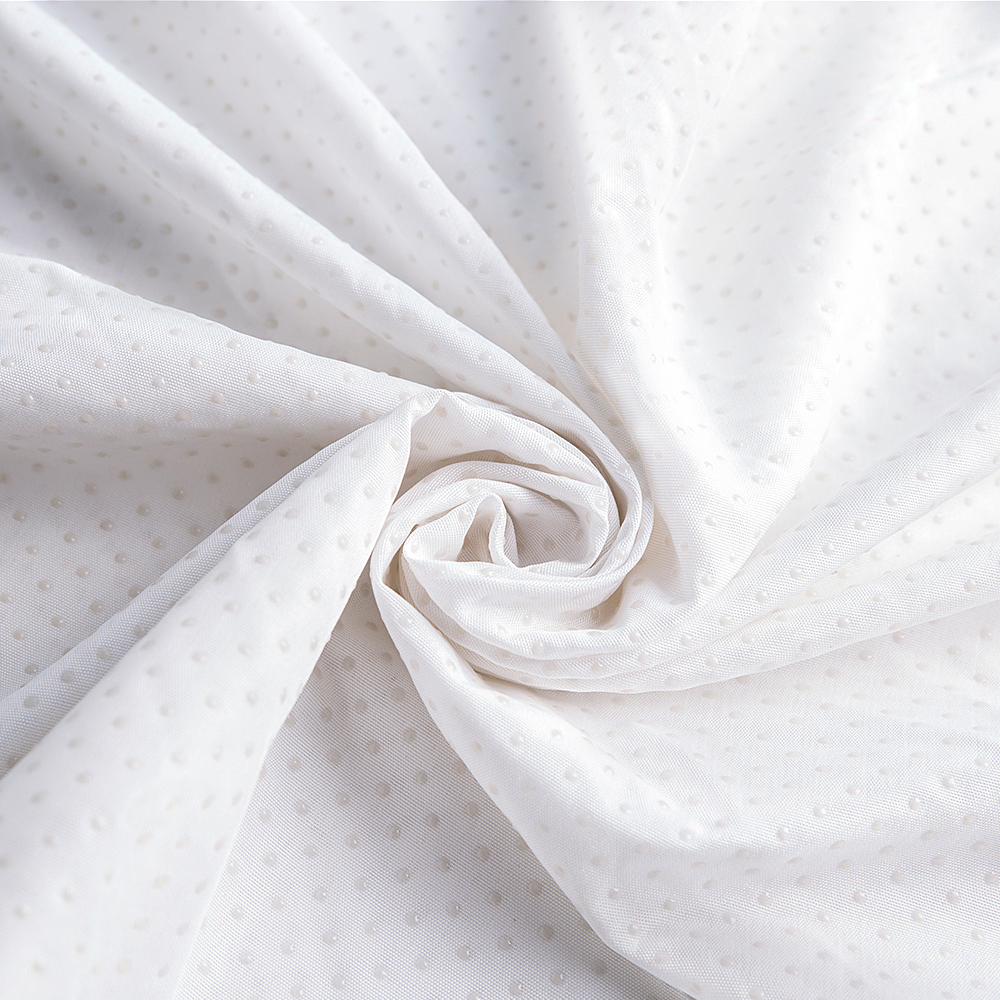Sanding-dyeing is a unique fabric treatment process that combines mechanical sanding with dyeing to enhance the texture and appearance of fabrics. This process is particularly popular in the textile industry for creating visually appealing and unique fabric finishes. Here's how sanding-dyeing enhances the texture and appearance of fabrics:
Improved Surface Texture:Softening Effect: Sanding involves the abrasion of the fabric surface using fine-grit sandpaper or abrasive rollers. This gentle abrasion removes a thin layer of fibers, creating a soft, velvety feel. The resulting fabric has a more luxurious and tactile quality that is highly desirable for garments and home textiles.Brushed Finish: The sanding process creates a slightly raised, brushed effect on the fabric surface, giving it a suede-like or peach-skin finish. This enhances the tactile appeal, making the fabric feel softer and warmer to the touch.
Enhanced Visual Depth and Color Contrast:Selective Dye Absorption: By selectively abrading the fabric surface, sanding-dyeing allows for differential dye absorption. The sanded areas can absorb more dye or sometimes less, depending on the dyeing process and fabric type. This results in unique patterns, shading, or washed-out effects that add depth and character to the fabric.Vintage or Distressed Look: Sanding-dyeing can be used to create a vintage, distressed, or worn-out look that mimics the appearance of aged or naturally weathered fabrics. This effect is particularly popular in denim and casual wear.
Enhanced Fabric Drape:Improved Drapability: The sanding process slightly breaks down the fabric’s surface fibers, reducing stiffness and increasing flexibility. This improvement in drape allows the fabric to flow more naturally, enhancing the appearance and comfort of the finished garment.

Creation of Unique Patterns and Effects:Subtle Patterns: The sanding process can be controlled to create unique, subtle patterns and designs on the fabric. For example, variations in sanding pressure and direction can produce a marbled, striated, or shaded appearance, adding to the fabric's aesthetic value.Faded or Ombre Effects: Sanding can be targeted in specific areas to create gradient or ombre effects, where the color gradually fades from dark to light. This effect adds visual interest and is highly valued in fashion and upholstery.
Enhanced Breathability:Porous Surface: The sanding process creates a porous surface on the fabric, which can enhance its breathability. This is particularly beneficial for fabrics used in clothing, as it improves comfort by allowing better air circulation.
Blending with Other Techniques:Combination Effects: Sanding-dyeing can be combined with other dyeing and finishing techniques, such as stone washing, enzyme washing, or over-dyeing, to produce even more complex textures and appearances. This versatility allows for greater creativity in fabric design.
Reduction of Pilling:Smooth Surface: By removing loose or protruding fibers on the surface, sanding-dyeing can reduce pilling, which enhances the longevity and aesthetic appeal of the fabric.Aesthetics for High-End Applications:Premium Finish: The enhanced texture and nuanced color variations achieved through sanding-dyeing give fabrics a premium, high-quality appearance. This makes them suitable for high-end fashion, upholstery, and interior design applications where both feel and look are critical.
Sanding-dyeing enhances the texture and appearance of fabrics by combining mechanical and chemical processes to create soft, visually dynamic, and unique finishes. Its ability to produce diverse effects, from subtle texture changes to bold patterns, makes it a versatile technique that adds significant value to textile products.





 English
English
 中文简体
中文简体






